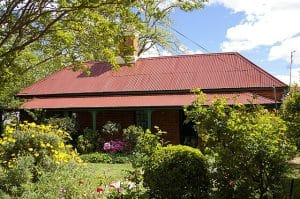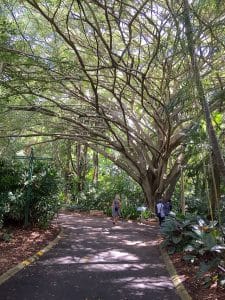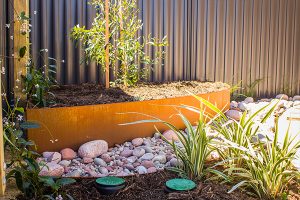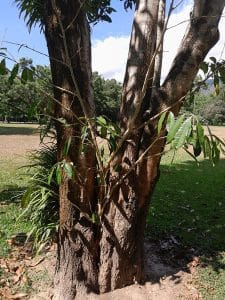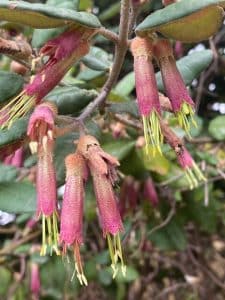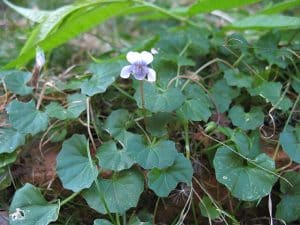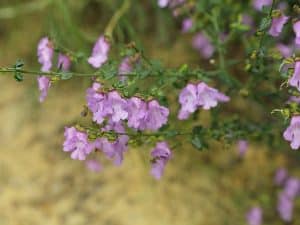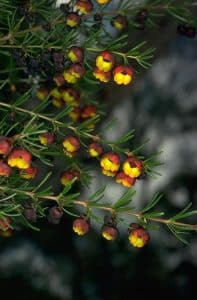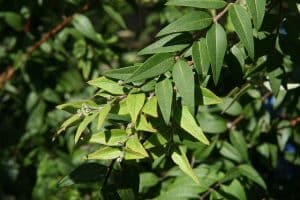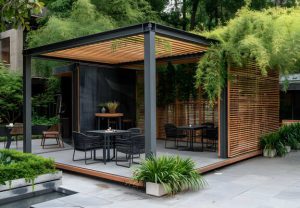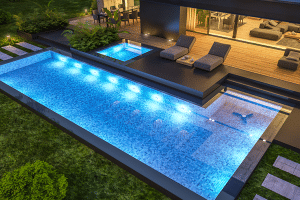Here at Luke’s Landscaping, our brilliant team of Perth landscapers have extensive experience in landscaping with native Australian plants in many homes and properties across the state. Australian natives are a resilient and beautiful species, which offer the perfect solution for those shaded nooks in your garden that yearn for life and colour. With our experience, we’ve come to know which Australian natives are the most shade tolerant plants.
Shade is a tricky topic for many reasons, as it can be difficult to determine how much shade an area in your garden receives and the best type of native plants to plant that will thrive in the shade, but here we’re going to share all the tips and tricks for success. Before we launch into which are the best shade-loving Australian native plants for your garden, let’s clear up what is considered shade.
When it comes to shade, generally speaking, less than 6 hours of sunlight to an area of a garden is considered semi-shaded. Here in Perth, WA, as we have such a dry climate, shade plants do not fare well in the afternoon or midday sun, even for a few hours, so this should also be a consideration. Shade plants in hot climates, like Perth, are best suited for positions in morning sun, under eaves and trees that create a microclimate of shade.
The type of the shade is impacted by what is creating the shade (such as other plants or structures). With the rise of the recent trend of indoor plants, retailers have made some improvements to their labelling which can help with selection when it comes to what type of shade plants prefer. So, if you’re ever unsure how much shade to give your native plants, simply check the label or we recommend asking your local nursery for tailored advice.
There are different common types of shade you need to consider when it comes to shade over your garden- part shade, dappled shade, full shade, wet shade, and dry shade.
Types of Garden Shade
Full Shade
An example of a full shaded garden is a garden under eaves on the shady side of a house where the shade is solid, below a dense mature tree or indoors. Australian native plants here receive minimal or less than 6 hours sun all year and no rain. Ambient light levels can change very slightly with the seasons but remain fairly constant. Plants here will receive no winter rain, however if watered, will be considered wet shade as less evaporation occurs. Where there is no reticulation, dry, full shade plants are suitable in this area. This can be a very tough, limited area to work in and therefore finding the right natives to thrive can be tricky.
Dappled Shade
Dappled shade can be described as a space where it is not light enough to be considered part shade but is perfect for full shade loving plants. In most cases it is a space where other foliage filters the light, and a small percentage comes through. There is an ambient light to the space and winter rainfall will wet the soil in dappled shade areas.
Part Shade
Part shade is space that receives direct sunlight for a part of the day, normally morning or late afternoon without the harsh midday or afternoon sun. This may be under deciduous trees that allow winter light below, an open arbour, or on the eastern side of a building. It’s recommended that 3-6 hours of sun is generally required for native plants that work in part shade areas.
Dry Shade
Dry shade is when shade is accompanied by dry soil conditions due to larger trees absorbing moisture or when rain is sparse. This can prove to be challenging conditions for a variety of plants to thrive in but can be improved through the addition of organic matter to the soil or ensuring regular irrigation.
Wet/Damp Shade
Wet shade conditions can be characterised by shady areas with moisture-rich soil that rarely dries out completely. These areas may be prone to flooding or near drainage locations that keep the soil wet.
Have a shaded area? Here are 11 of the Best West Australian Natives to Plant in your Shady Garden.
If your backyard or front yard is covered with shade, and you’d like to plant natives, it can be difficult to find the most-suited Australian natives that will thrive. Here, we’ve made it easy by recommending 11 of the best Australian natives that love shade, all year round:
1. Cyrtomium Falcatum ‘Holly Fern’
Conditions: Dry, part shade
Size: 0.6H x 1.0W
Suitable to most soils this a hardy fern that is great for borders, underplanting and pots. Surprisingly tough, it can also tolerate moderate coastal winds and light frost. This plant is a great foliage texture addition.
2. Dampiera Diversifolia
Conditions: Dry, part to full shade
Size: 0.3H x 1.0W
Suitable for all soil types with bright purple flowers from spring to summer. When looking for Australian native plants for dry shade this groundcover from the south of Western Australia is great for rockeries, hanging baskets, pots, retaining and cottage gardens. The bright profusion of flowers attracts bees and other insects. With morning sun, it will reward you with extra flowers.
3. Correa ‘Dusky Bells’
Conditions: Dry, part to full shade
Size: 0.7H x 2-4.0W
Suitable for all soil types , this correa is a spreading and mounding shrub with gorgeous ‘fairy hat’ flowers in autumn to winter. It will tolerate coastal conditions, some drought and is excellent habitat for small birds and insects. Tip prune after flowering to maintain its bushiness.
4. Viola Hederacea ‘Native Violet’
Conditions: Dry, part to full shade
Size: 0.2H x 1.0W
Native violet is a perfect gap filler plant that is super adaptable. This plant flowers all year round with delicate white and purple violet shaped flowers above the foliage. It is also used as a lawn substitute for low traffic areas and will work itself neatly around steppers.
5. Prostanthera Seiberi ‘Minty’
Conditions: Dry, part shade
Size: 1.5H X 1.2W
Suitable for all soil types, this plant has a nice natural mound shape with dense foliage that smells like mint when crushed in the fingers. It is good for hedging or screening, pots, cottage gardens and coastal gardens. Butterflies and insects love the mass of purple flowers that appear spring to summer.
6. Chorizema Cordatum
Conditions: Dry, part shade or full sun
Size: 1.2m
With its bright orange, red and yellow flowers, this local native will brighten up a shady spot in spring summer and winter – try and give it at least 3 hours sun for best flowering.
Have a Wet Shade Garden? Plant These Australian Natives:
7. Asplenium ‘Island Beauty’
Conditions: Wet, part shade or full sun
Size: 1.5H X 1.5W
Suitable to loam and sandy soils. This is a vigorous growing fern with delicate weeping fronds. A tough plant perfect for underplanting and pots, it prefers to be kept moist … perfect for a tropical garden.
8. Adiantum Maidenhair Fern
Conditions: Wet, dappled shade
Size: 0.8H X 0.8H
An easy fern to grow it has black stems with delicate foliage. Perfect for courtyards, underplanting and hanging pots with moist soil. Protect from winds and frost. This plant can regrow when completely cut back.
9. Boronia ‘Heaven Scent’
Conditions: Wet, dappled shade
Size: 0.8H X 0.5W
A heavily scented plant with rich brown petals and golden yellow inside. Suitable for neutral sandy soils including pots it is a dense upright shrub. Boronia needs shelter from the wind and kept moist for best growth. It is a short-lived plant, but the show of fragrant flowers is worth it.
10. Juncus Pallidus ‘Pale Rush’
Conditions: Wet, part shade
Size: 2.0H X 1.0W
Suitable for most soil types this rush grows in moist soils, making it perfect for boggy areas, ponds and dams to stabilise the soil and create habitat for wildlife. It can tolerate coastal conditions and is very low maintenance. It has a great upright structural form with grass like flowers in spring to summer.
11. Austromyrtus Dulcis ‘Midgen Berry’
Conditions: Wet, part shade
Size: 1.5H X 1W
Also known as Midyim Berries, this bush tucker plant will reward you with small white flowers in spring to summer which then turn into delicious, sweet edible berries. It is easy to grow in all soil types with a preference to neutral and acid soils. It likes to be kept moist but can tolerate the occasional dry spell, though this will affect fruit production. Giving it a prune after fruiting will keep it growing nice and dense.
When is the Best Time to Plant Australian Natives in the Shade?
Now you know what Australian natives thrive in the shade, planting them at the right time of year will ensure a recipe for a long-lasting, healthy, and flourishing garden. Typically, the ideal time to plant Australian natives in Perth is during the cooler months of autumn (March to May) or early spring (September to November). Planting during these times allows the plants to establish their root systems in the cooler, wetter conditions before the hot summer arrives.
With the Right Australian Natives, your Shaded Garden will Thrive now and for Years to Come
Embracing the shade in your garden doesn’t have to be a daunting task. With the right selection of Australian native plants, those previously overlooked areas can emerge as vibrant, life-affirming spaces. The examples we’ve provided serve as a testament to the adaptability and beauty of our native flora, capable of thriving in the diverse light conditions our Perth landscape offers. Whether you’re looking to introduce the delicate textures of ferns or the vivid hues of Dampiera Diversifolia, there’s an Australian native plant waiting to transform your shaded garden area into a flourishing ecosystem.
Need Advice or Want to Landscape your Shaded Garden? We’re Here to Help!
If you want to leave it to the professionals, we’re here to help. Our team have years of experience with planting Australian natives and garden design across Perth. We have the confidence to provide the best solution for your shaded garden, ultimately creating a beautiful oasis which considers every aspect of your garden design. Get in touch with our team today for a free quote!

